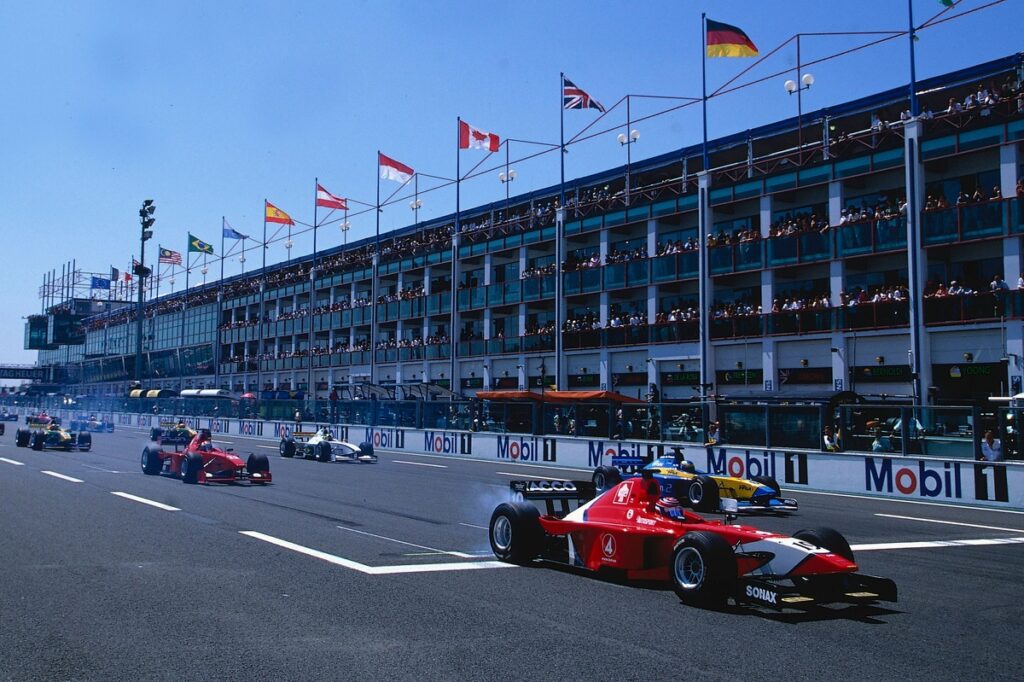The International Formula 3000 championship was born 40 years ago. The final rung on the single-seater ladder before Formula 1 began in 1985 and enjoyed a 20-year run, with future F1 race winners Jean Alesi, Olivier Panis and Juan Pablo Montoya among its champions before the category was replaced by GP2 in 2005.
But several prominent drivers, among them winners in F1, the Le Mans 24 Hours and the Indianapolis 500, also learned their craft in the category without quite ascending the top of the pile.
In this article, we attempt to rank the best drivers who didn’t quite manage to claim the F3000 title, considering their relative experience, deficit to the eventual champion, errors versus misfortune, and standout moments as qualifying criteria. Their performances outside of F3000 are not considered.
Although no F3000 runner-up lost out by a smaller margin than Erik Comas, who tied on points with Alesi in 1989, he is exempt from the list as he went on to win the title the following season. Montoya (1997) and Nick Heidfeld (1998) are omitted for the same reason, winning the title in the year after their narrow defeats.
Several drivers just missed out on making our top 10. These include Emanuele Pirro, who finished in the top three in 1985-86 driving Onyx Marches, and 1990 runner-up Eric van de Poele. His three victories that year aboard a GA Motorsport Reynard 90D, including on the tricky streets of Pau and Birmingham, came when a Lola T90/50 was the car to have.
The late Gil de Ferran was a race winner in 1993 and after sticking with Paul Stewart Racing went into the final round of 1994 with the joint lead of the standings – but would likely have been comfortably clear without a fuel line failure in Barcelona and being taken out of the lead by Emmanuel Clerico in Estoril.
And while Heidfeld took the 1999 crown with almost double the tally eventually mustered by Super Nova’s Jason Watt, the popular Dane beat the McLaren junior in a head-to-head at the Nurburgring finale to clinch the runner-up spot – which followed finishing third in 1997 and fourth in 1998 with Super Nova satellite squad Den Bla Avis.
10. Mark Webber
Webber’s form tailed off towards the end of 2001, but he won three races – the same as champion Wilson
Photo by: Clive Rose / Motorsport Images
Best Result: 2nd (2001)
Team/Car: Super Nova Racing Lola B99/50
Wins: 4 (3 in 2001)
Poles: 2
Points deficit: 32
The future nine-time F1 race winner joined David Sears’s Super Nova team for his second season in F3000 and was Justin Wilson’s closest challenger for the title before his form dipped late on.
Webber had won at the second time of asking with European Arrows in 2000 and immediately took a podium when 2001 commenced with a maiden trip to Brazil – although was dumped out of the points by a penalty for overtaking before a restart. Wins at Imola, Monaco and Magny-Cours – the first two from pole – underlined why Flavio Briatore entrusted him with Benetton F1 test duties, but a spate of non-finishes to end the season lent a one-sided look to the final standings.
A first lap clash at Hockenheim was followed by a late spin in Hungary, firing into the Les Combes barriers when the field was released from behind the safety car at Spa and being rammed from behind once more on the opening lap at Monza. Yet Webber had proved his point and graduated to F1 for 2002 with aplomb.
9. Nicolas Minassian
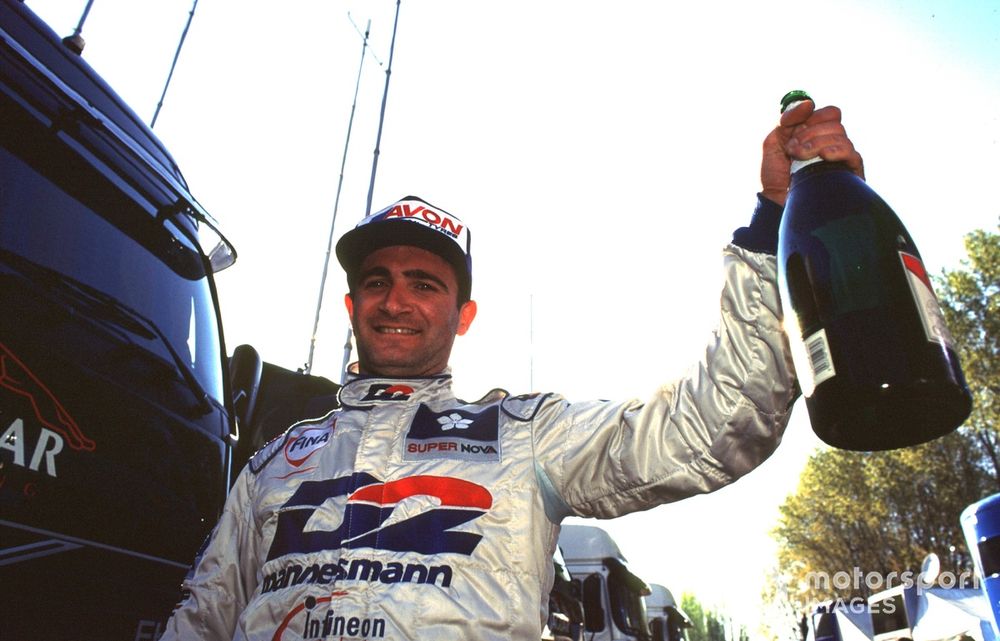
Minassian began 2000 by winning for Super Nova at Imola, and ran Junqueira close to the crown
Photo by: Motorsport Images
Best Result: 2nd (2000)
Team/Car: Super Nova Racing Lola B99/50
Wins: 4 (3 in 2000)
Poles: 1 (0 in 2000)
Points deficit: 3
Another Super Nova driver on the list, Minassian lost out to fellow third-year driver Bruno Junqueira after an entertaining year-long scrap. After a confidence-damaging season at McLaren’s junior arm, West Competition, in 1998, the Frenchman rebuilt his reputation with start-up squad Kid Jensen Racing during a 1999 season that peaked with a dominant drive at Silverstone.
Joining Super Nova for 2000, Minassian beat Petrobras rival Junqueira after getting the better getaway at Imola, but found himself 20 points behind by the time the championship arrived at Magny-Cours following a hat-trick for the Brazilian. Yet Minassian got himself back on terms with back-to-back wins, fending off Sebastien Bourdais in France and keeping a charging Wilson behind at the A1-Ring, to set up a thrilling end to the year.
But after both drivers failed to score in mixed conditions at Hockenheim, fourth in Hungary as Junqueira won again left Minassian too much to do at the Spa finale – where he bravely raced to third despite cutting his thigh with a Stanley knife. He became a top sportscar racer with Peugeot and today runs the IDEC Sport team.
8. Giorgio Pantano
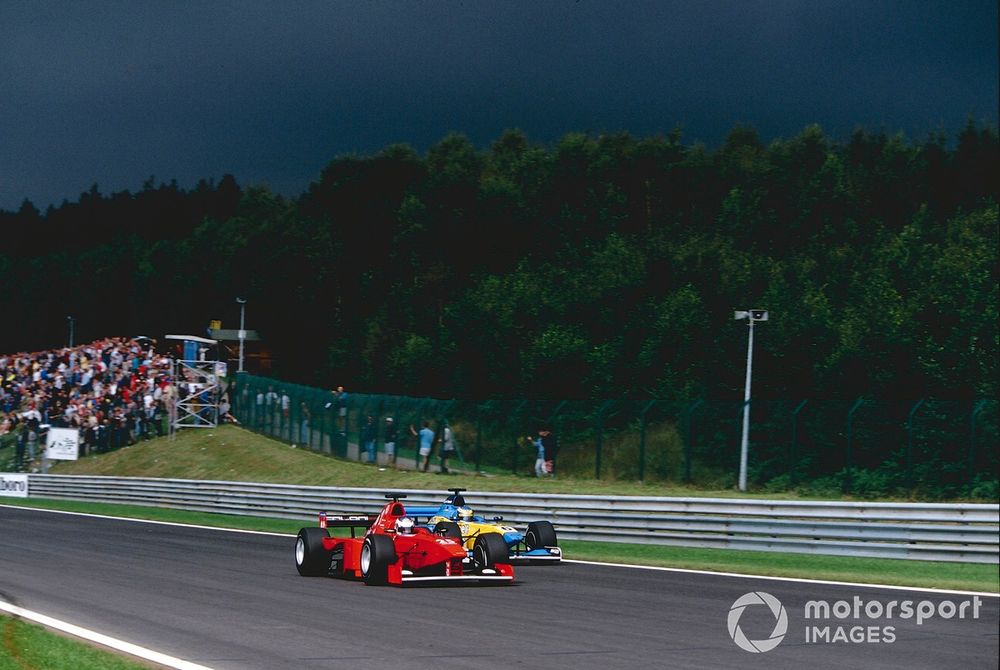
Pantano beat Bourdais at Spa to keep his 2002 title hopes alive, but the Coloni man ultimately came up short before shining again at Durango in 2003
Photo by: Charles Coates / Motorsport Images
Best Result: 2nd (2002)
Team/Car: Coloni Lola B02/50
Wins: 6 (3 in 2002)
Poles: 3 (1 in 2002)
Points deficit: 2
That Pantano got as close to winning the 2002 F3000 title as he did, despite driving for a Coloni team that had scored just three points the previous season, speaks volumes for the Italian’s galvanising qualities. Those were demonstrated again in 2003 when, short of finances and options, he was handed a free drive by Durango and duly took its first wins since 1998 – and was only denied second in the standings by a final round electronics glitch that cut his engine.
Already a winner in his rookie season at Astromega in the 2001 Monza finale, Pantano responded well to losing what he believed was a nailed-on drive at Super Nova to Bourdais and pressured the Frenchman into a final lap mistake to open his account for the year in Barcelona. Mistakes resulted in DNFs at Monaco and Nurburgring, but he was never off the podium in the final five races – taking wins at Hockenheim and Spa, only to lose out in a must-win Monza finale when well-placed to pounce on leader Bjorn Wirdheim.
The Swede was dominant in his second year at Arden in 2003, but Pantano gave him a decent run for his money, taking two more wins at Barcelona and Magny-Cours to secure what turned out to be an unhappy graduation to F1 with Jordan for 2004.
7. Franck Lagorce
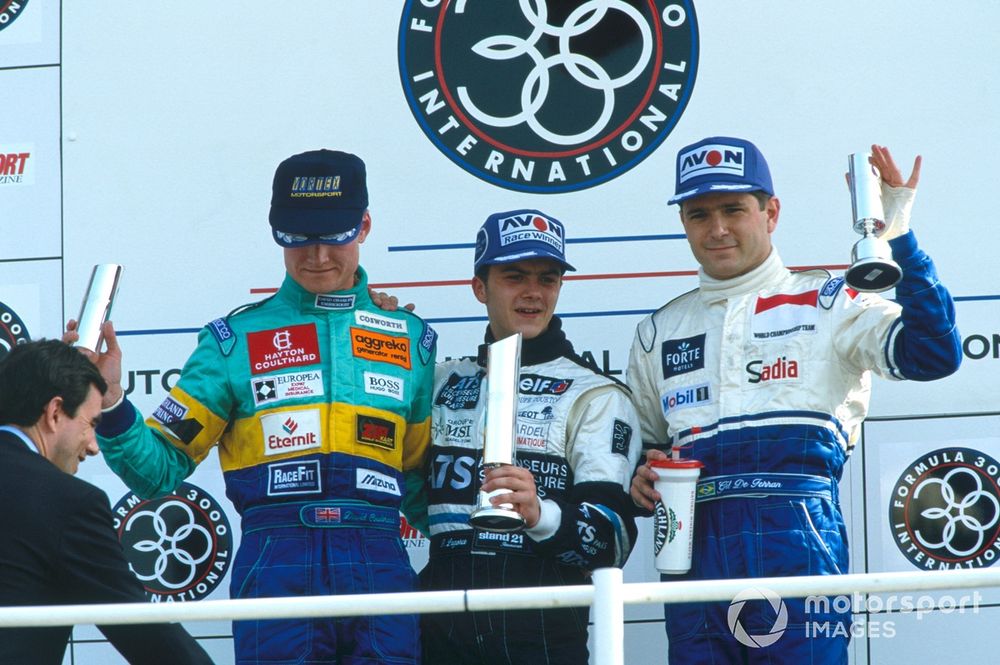
Flanked by David Coulthard and Gil de Ferran after winning at Silverstone, Lagorce’s late season stumbles opened the door for Boullion
Photo by: Motorsport Images
Best Result: 2nd (1994)
Team/Car: Apomatox Reynard 94D
Wins: 4 (2 in 1994)
Poles: 5 (4 in 1994)
Points deficit: 2
The qualifying king of F3000 in 1994, Lagorce was the only driver to start from pole more than once, a feat he managed at half of the races. Yet the Frenchman missed out on the title to Jean-Christophe Boullion after a final round showdown as the DAMS racer’s late surge helped him surpass Lagorce and de Ferran.
The form man at the end of 1993, having won the last two races for DAMS, Lagorce’s attacking style proved perfectly suited to the Reynard 94D. Although Apomatox had never won a race before, Lagorce swept the field aside at Silverstone and repeated the feat at Hockenheim after blitzing past poleman Guillaume Gomez (DAMS).
Second at Enna to de Ferran, Lagorce was shaping up to notch another podium at a damp Spa when he made the call to pit for slick tyres. It proved a catastrophic misjudgement when rain resumed, costing him any chance of points – while also opening the door for Boullion to enter contention.
Boullion won again at Estoril, where Lagorce fell off the road while lying third and ultimately failed to score. That meant Boullion was just a point behind heading to the finale at Magny-Cours, where once again Lagorce couldn’t turn one-lap superiority into victory. Although Apomatox had the edge in wet qualifying, the race was dry and favoured the DAMS car’s set-up, allowing Boullion to overhaul Lagorce and edge away. Two F1 starts at the end of 1994 with Ligier were unrepresentative of his potential.
6. Pedro Lamy
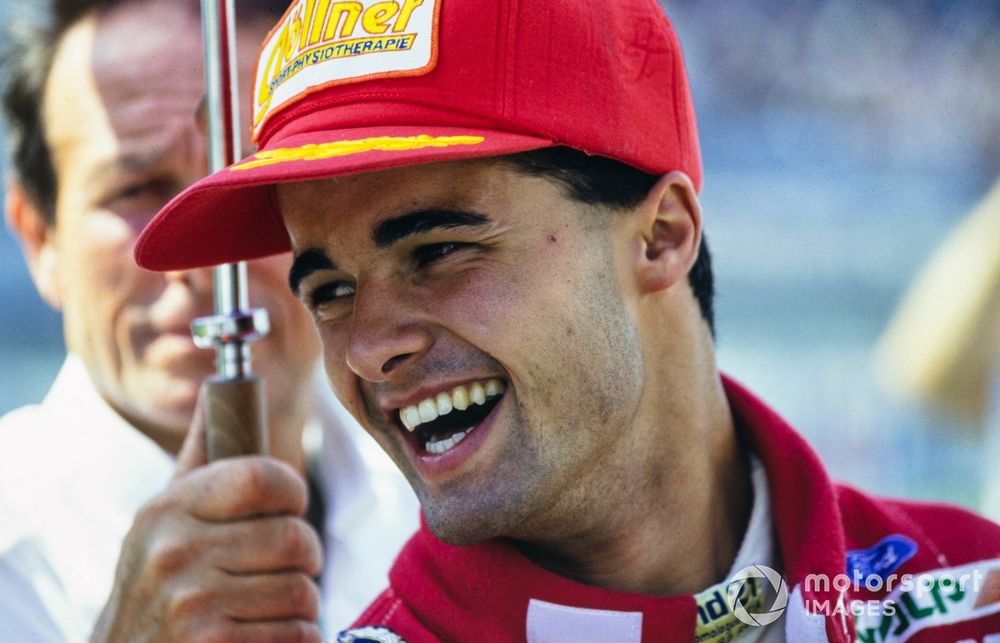
Lamy came very close to denying Panis the 1993 title, despite running year-old Reynard
Photo by: Motorsport Images
Best Result: 2nd (1993)
Team/Car: Crypton Racing Reynard 92D
Wins: 1
Poles: 2
Points deficit: 1
In his one and only season of F3000, Lamy came agonisingly close to beating Panis to the crown despite using a year-old car. But like Lagorce, self-inflicted mistakes proved costly.
Joining the Crypton Racing team that had delivered Luca Badoer the 1992 title, the German F3 champion took to F3000 quickly and finished second on his debut. Victory at Pau’s third round underlined that continuing to use a Reynard 92D with a Mader-tuned DFV was no significant hindrance.
Lamy could have won at Enna but, after slowing a lap too early in the belief he’d won, spun off in his bid to repass David Coulthard and threw away six points. More went begging with spins at the Nurburgring and Spa, the latter while pressuring Panis for the lead. Fourth-place finishes at both races were unrepresentative of his pace and, although he closed in on Panis with a podium at Magny-Cours when his rival spun off, a poor qualifying at the Nogaro finale left him vulnerable to becoming embroiled in someone else’s accident.
Making his F1 debut before the final two rounds with Lotus showed that the Portuguese was a man in a hurry, but his F1 career was disrupted by a huge leg-breaking test crash in 1994 from which he did well to return with Minardi and ultimately win five times at the Nurburgring 24 Hours.
5. Pierluigi Martini
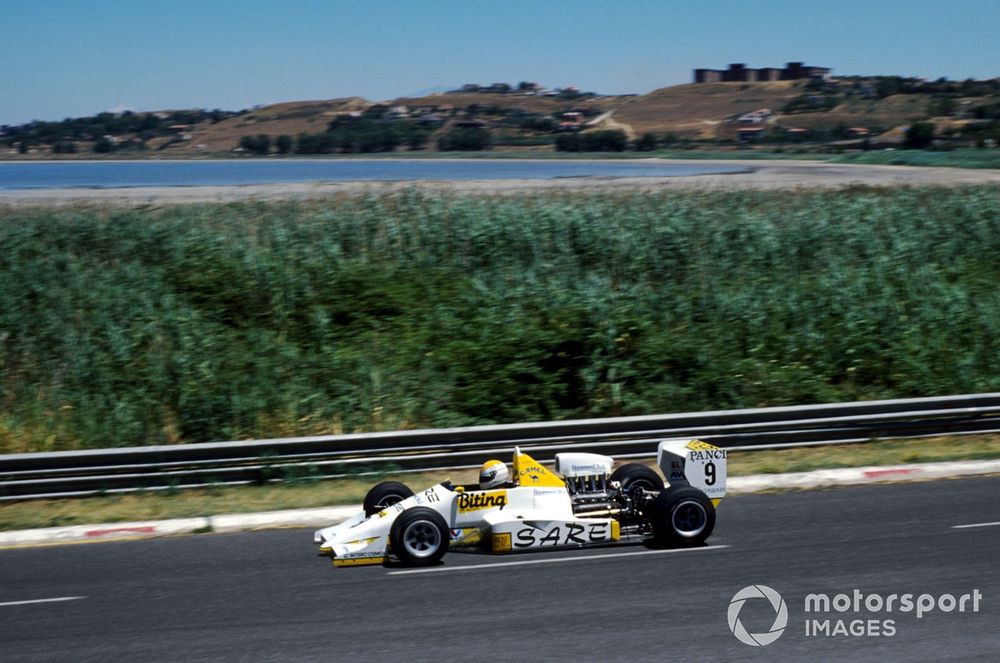
Martini continued to race in F3000 after placing second in 1986, scoring March’s only win of a dire 1988 at Enna
Photo by: Sutton Images
Best Result: 2nd (1986)
Team/Car: Pavesi Corse Ralt RT20
Wins: 4 (3 in 1986)
Poles: 2
Points deficit: 2
Following a difficult rookie season in F1 with an unreliable Minardi, Martini picked himself up and set about proving to the grand prix paddock what it was missing when he rejoined Luciano Pavesi’s Ralt squad for 1986.
Reigniting a partnership that yielded the 1983 European F3 title, the Italian missed out on the F3000 title to more consistent compatriot Ivan Capelli (Genoa March), but won more races than the champion once he’d traded a year-old car for the latest model at Imola.
Having scored no points from the opening four rounds, Martini collected back-to-back wins at Imola and Mugello – a third would almost certainly have followed had he not been overzealous in his efforts to pass Gabriele Tarquini at Enna and spun to the back before charging to second. Second in Birmingham, on a day only half points were rewarded when rain stopped play, he won again at the Jarama finale but it had come too late to deny Capelli.
Sticking with Pavesi for 1987, continuing to use his 1986 car, yielded little reward, but he was superb with First Racing in 1988. Martini recorded the only win all season for the disappointing March 88B at Enna after securing a deserved recall from Minardi. His giant-killing exploits would give the little team its best days in F1 and earned him top spot in our list of Minardi’s greatest drivers.
4. Kenny Brack
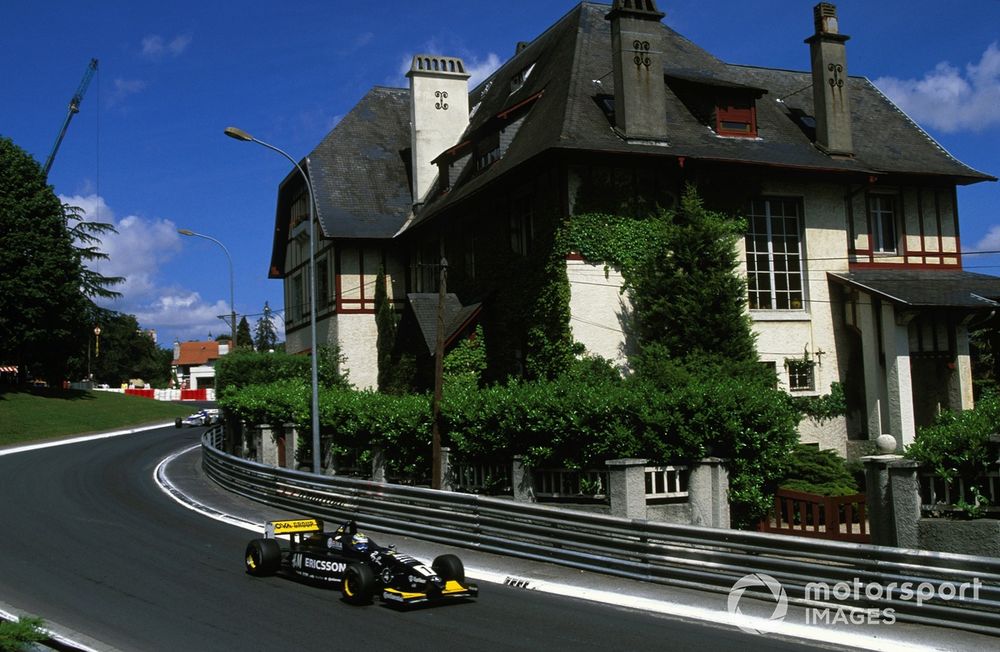
Brack came out of the blocks fastest when F3000 went one-make in 1996, but the Super Nova driver ultimately lost out to Muller
Photo by: Sutton Images
Best Result: 2nd (1996)
Team/Car: Super Nova Racing Lola T96/50
Wins: 4 (3 in 1996)
Poles: 5 (3 in 1996)
Points deficit: 3
As in 1986 with Martini and Emanuele Naspetti in 1991, Brack ended the 1996 F3000 season with more wins than the champion after a dramatic and controversial conclusion at Hockenheim.
Victory for Madgwick in the final round of F3000’s open era at Magny-Cours in 1995 meant the union between Brack and Super Nova was expected to shine when everybody was armed with Lola T96/50s. He duly opened 1996 with a win at the Nurburgring and added further victories from pole at Silverstone and the first of two visits to Hockenheim.
But the consistency of his main title rival, RSM Marko’s Jorg Muller, meant the pair were split by just three points heading back to Hockenheim for the final round – with Muller ahead. The long and short of the situation was the pair crashed into each other while battling for the lead, putting Muller out. But Brack was unable to capitalise when he was black flagged, to the team’s fury, ensuring Muller won the title.
Both were overlooked by F1 in any case, with Brack going on to win the Indy 500 in 1999 while Muller headed for a career with BMW in sportscars and touring cars.
3. Mike Thackwell
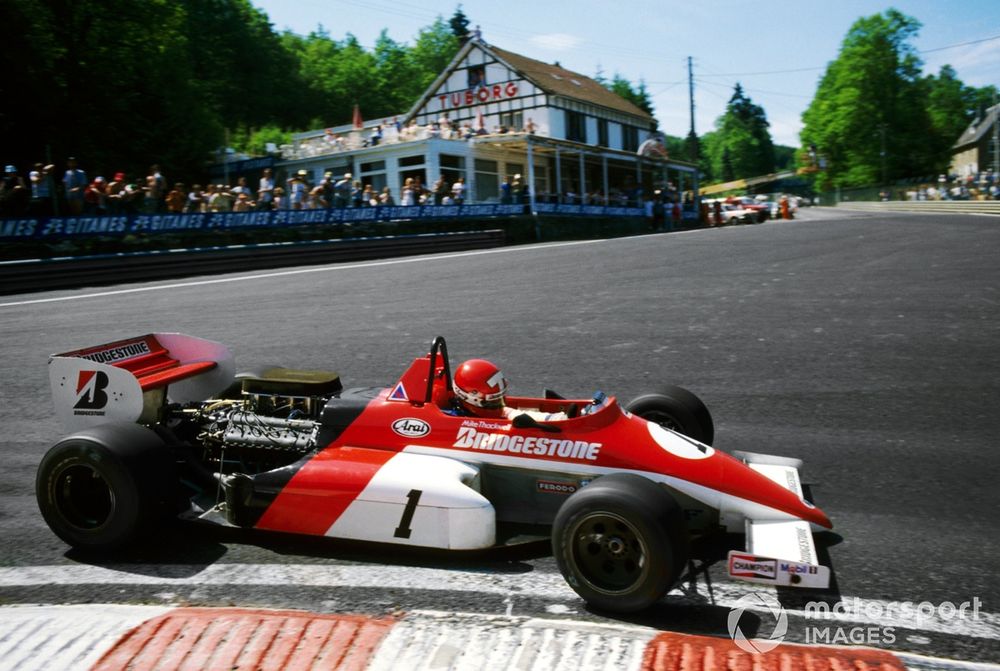
Masterful drives from Thackwell, such as at Spa on the crumbling track, were not rewarded with the inaugural title
Photo by: Sutton Images
Best Result: 2nd (1985)
Team/Car: Ralt Racing Ralt RT20
Wins: 4 (3 in 1985)
Poles: 5
Points deficit: 7
The only reason the 1984 European F2 champion isn’t higher on this list is because he was expected to deliver the goods when F3000 emerged from F2’s ashes in 1985. Bafflingly overlooked by F1, Thackwell remained with Ron Tauranac’s factory Ralt team against a field largely comprised of his vanquished rivals from F2 and duly opened the new era with victory in mixed conditions at Silverstone.
His Bridgestone tyres were usually superior to Avon’s offering, which would become standard from 1986, and the Kiwi made good use of them – although was regularly undone by mishaps that were not his doing. Thackwell valiantly charged back to second at Thruxton after his front wing was damaged at the start by Tarquini, was leading at Estoril when his rev limiter failed, crashed after a misunderstanding while trying to pass team-mate John Nielsen at Vallelunga, and was out after collecting the spun Michel Ferte at Pau.
Victories on a deteriorating track at Spa and with an overheating DFV at Enna meant he reclaimed the lead of the standings from Pirro, despite a tyre mishap at the Osterreichring, but a first corner clash with Pirro at the Donington finale opened the door for Christian Danner’s BSA March to scoop the crown.
Thackwell made sporadic F3000 appearances in 1986 and scored the first win for John Judd’s new Honda-badged BV engine when he beat Pirro at Pau, having earlier netted fourth in a Lola at Silverstone. He stepped away from motorsport in 1988, feeling disillusioned, having not achieved the accolades his talent surely merited.
2. Tomas Enge
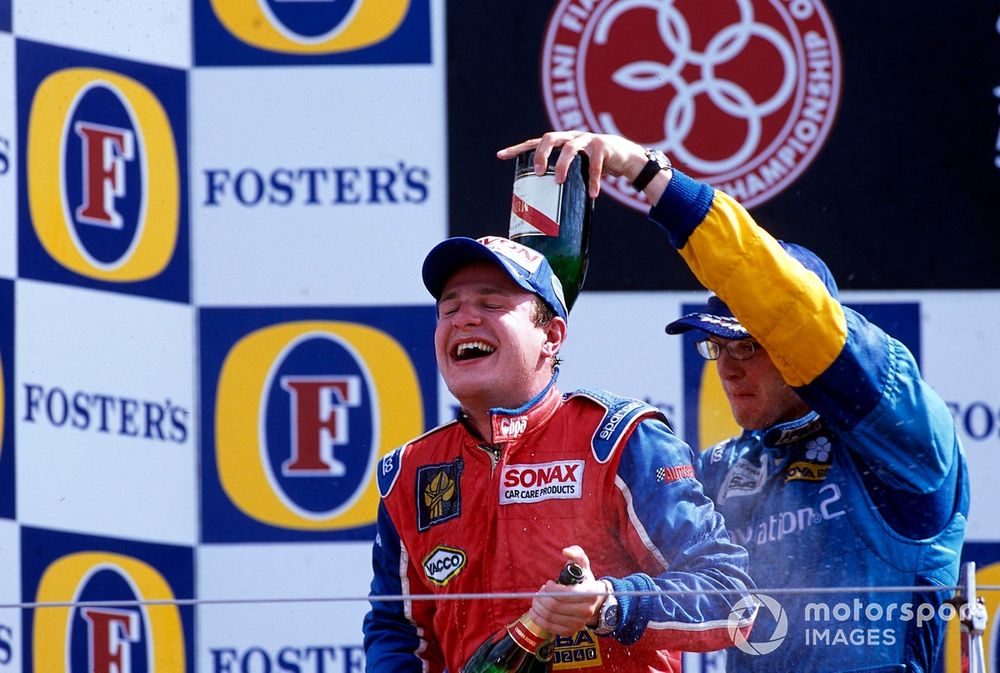
Enge briefly held the title in 2002, but it ultimately went to Bourdais after the Czech’s points from Hungary were stripped
Photo by: Peter Spinney / Motorsport Images
Best Result: 3rd (2001 and 2002)
Team/Car: Nordic Racing Lola B99/50/Arden Lola B02/50
Wins: 6 (3 in 2002)
Poles: 8 (4 in 2002)
Points deficit: 6 in 2002
The irony of Tomas Enge’s inclusion here is that, for a short period in 2002, he was actually the champion. But being docked 10 points for victory in Hungary when a random drugs test found cannabis in his system ultimately demoted the Czech to third in that year’s standings, as Bourdais claimed the crown for Super Nova.
Enge had proved himself a winner with West Competition at Hockenheim in 2000, his second full season in F3000. He upped his game in 2001 upon joining Nordic, taking wins at Barcelona and the Nurburgring, although team-mate Wilson had the edge in the title race.
After taking in F1 with three starts for Prost at the end of 2001, Enge was the missing piece of the jigsaw puzzle at Arden in 2002 and his experience proved invaluable as Christian Horner’s team got on top of Lola’s new B02/50. After a likely Brazil win went begging with insufficient fuel in the tank to reach the finish, Enge showed it was no fluke by dominating at the A1-Ring and Silverstone.
Fending off Bourdais under constant pressure at Magny-Cours was even better and, although he suffered a setback in being taken out at Hockenheim, the ‘victory’ in Hungary put him ahead of Bourdais with two races to go. Engine failure for the Frenchman at Monza meant Enge took the crown on the road, but it proved cruelly short-lived.
An undesired comeback in 2004 with the new Ma-Con team yielded no more wins, but ensured he banked more fastest laps and podiums than any other driver in championship history.
1. Alex Zanardi
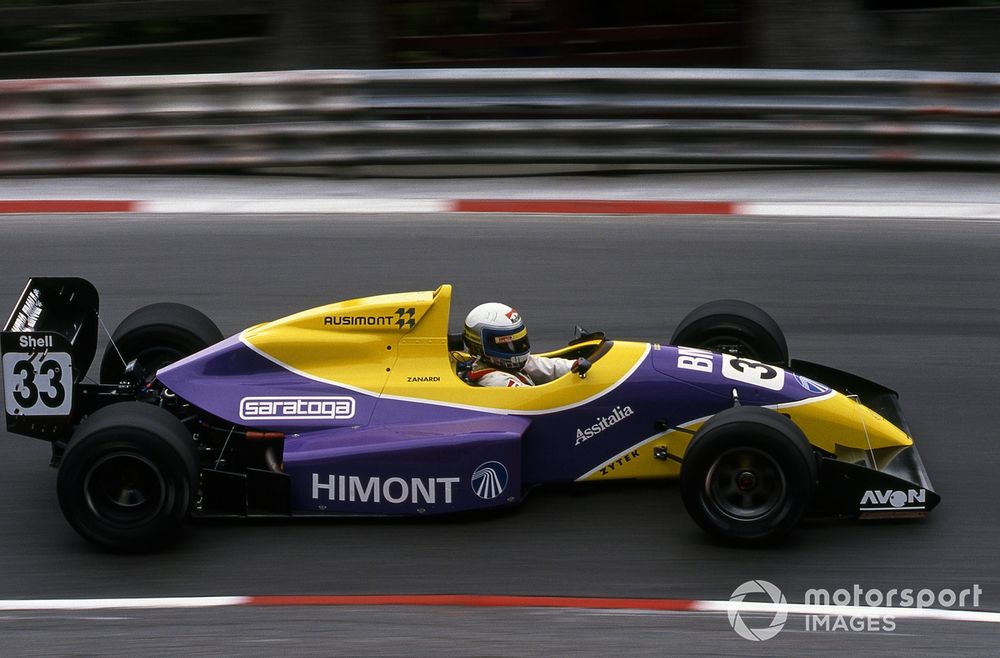
Poor finishing record, often caused by bad luck, hampered Zanardi’s 1991 title bid with IBR
Photo by: Andre Vor / Sutton Images
Best Result: 2nd (1991)
Team/Car: Il Barone Rampante Reynard 91D
Wins: 2
Poles: 3
Points deficit: 5
Had it not been for the puncture that stranded Zanardi while on course for victory at Enna, or the electrical fault that cost him second place at Le Mans, the Italian would certainly have beaten fellow rookie Christian Fittipaldi (Pacific Reynard) to the crown in 1991.
Even accounting for the fact that most of the expected title contenders were in Lolas that proved incapable of taking on Reynard – leaving Allan McNish, Damon Hill and Marco Apicella out of the picture – Zanardi’s year was enormously impressive.
Victory on his first start for Il Barone Rampante at Vallelunga (although not his F3000 debut, as he had made an unmemorable cameo at Dijon in 1989) showed that Zanardi meant business, and he also had the field covered at Mugello. When he finished, he was never lower than second. But a poor finishing rate let him down.
More points were also lost to the driveshaft failure that put him out at Pau while running ahead of eventual winner Jean-Marc Gounon, although Zanardi was at fault for his other non-score on a wayward day at Hockenheim.
That he came up just five points shy after a head-to-head at Nogaro, despite scoring in just six of the 10 rounds, attests to how spectacular Zanardi was – a point that will not surprise anybody who saw what he was capable of aboard a Chip Ganassi Reynard-Honda in Indycars…
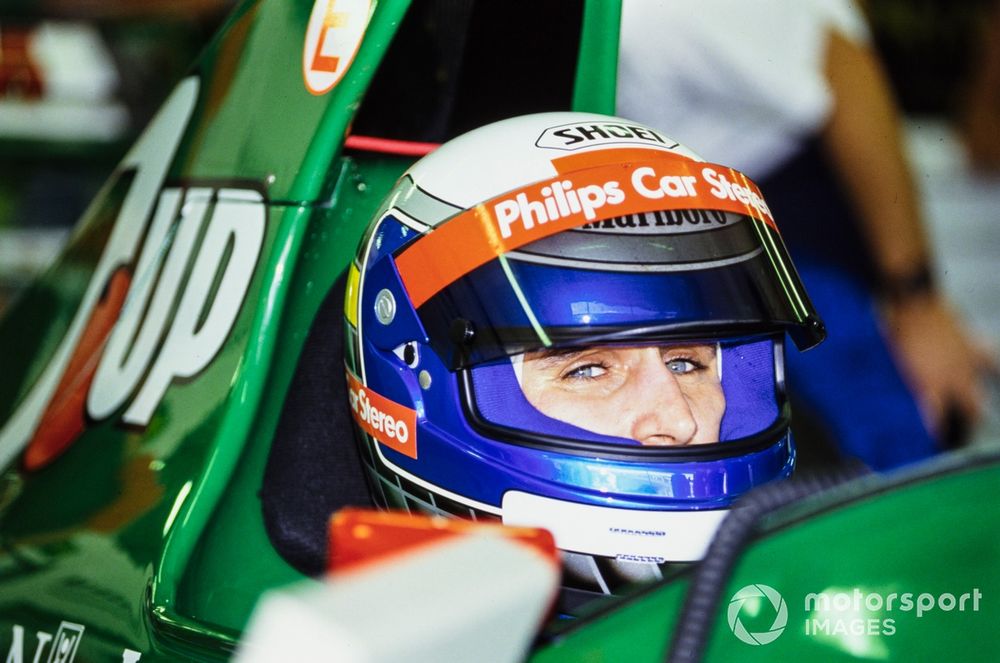
Zanardi’s 1991 performances earned him an F1 call up by the end of the year with Jordan
Photo by: Motorsport Images
In this article
James Newbold
General
Pedro Lamy
Nicolas Minassian
Mark Webber
Alex Zanardi
Giorgio Pantano
Tomas Enge
Kenny Brack
Franck Lagorce
Pierluigi Martini
Mike Thackwell
Be the first to know and subscribe for real-time news email updates on these topics
Subscribe to news alerts
Read the full article here

